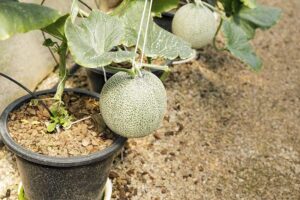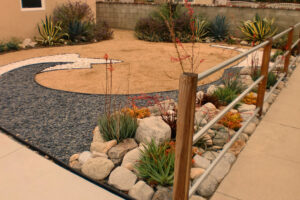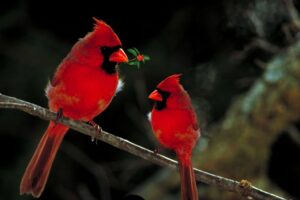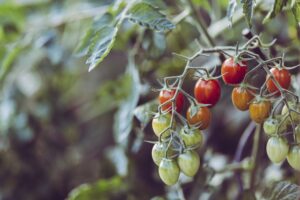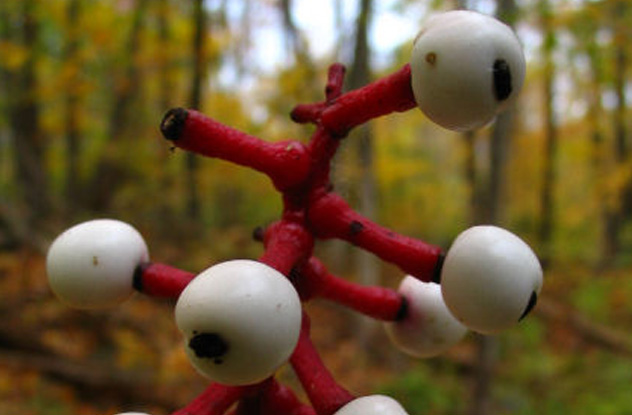
The world of flora often surprises us with its astonishing diversity, sometimes even resembling parts of the human body. This phenomenon, known as anthropomorphism in botany, has long fascinated scientists, artists, and enthusiasts alike. From flowers that resemble eyes to roots that mimic limbs, plants with human-like features have captured our imagination throughout history. In this article, we explore the intriguing world of plants that bear striking resemblances to various parts of the human body.
I. Introduction
The allure of anthropomorphic plants lies in their ability to evoke wonder and curiosity, transcending mere botanical interest. Throughout history, humans have ascribed symbolic meanings and cultural significance to plants that resemble body parts, reflecting our complex relationship with nature and our own corporeal existence. From religious iconography to artistic symbolism, anthropomorphic plants have left an indelible mark on human culture and imagination.
II. Plants Resembling Facial Features
A. Flowers Resembling Eyes
Certain flowers, such as orchids and certain varieties of daisies, exhibit patterns and shapes that closely resemble human eyes. These floral “eyes” often feature intricate markings and coloration that mimic the appearance of irises and pupils, creating a striking visual resemblance to the windows of the soul.
B. Leaves Resembling Lips
The natural world is replete with leaves that bear uncanny resemblances to human lips. Some species of orchids and certain succulents have leaves that curve and fold in a manner reminiscent of puckered lips, complete with ridges and folds that mimic the texture of human skin.
C. Fruits Resembling Noses
Fruits come in a variety of shapes and sizes, and some bear a remarkable resemblance to human noses. Gourd varieties, such as bottle gourds and calabash, often feature bulbous shapes and elongated stems that closely resemble nasal appendages, leading to whimsical comparisons with human noses.
III. Plants Resembling Limbs and Appendages
A. Branches Resembling Arms and Hands
The branching patterns of certain trees and shrubs can sometimes resemble human arms and hands, complete with fingers and thumbs. Species like the Baobab tree and the Manchineel tree exhibit twisted and contorted branches that evoke images of outstretched limbs, adding a surreal quality to their appearance.
B. Root Systems Resembling Legs and Feet
Below the surface, plant root systems can form intricate networks that bear resemblance to human legs and feet. Some root structures, such as those of the Ginseng plant and certain fig tree varieties, exhibit elongated shapes and branching patterns that evoke images of human lower limbs, lending an eerie anthropomorphic quality to the plants.
C. Stems Resembling Fingers and Toes
In certain plant species, stems and tendrils can take on forms that resemble human fingers and toes. Vining plants like ivy and certain types of climbing roses often produce tendrils that curl and twist in sinuous patterns, resembling the digits of human hands and feet in their delicate movements.
IV. Plants Resembling Internal Organs
A. Fruit and Vegetable Analogies
The world of fruits and vegetables offers numerous examples of produce that bear striking resemblances to human internal organs. From tomatoes and avocados that mimic the texture and appearance of human hearts to kidney beans and walnuts that evoke images of kidneys and brains, edible plants often mirror the shapes and structures of our vital organs.
B. Medicinal Plants with Organ-shaped Parts
In traditional herbal medicine, certain plants are prized for their resemblance to specific human organs and are believed to possess healing properties corresponding to those organs. Examples include ginseng roots, which are revered for their resemblance to the human body, and mandrake roots, which have long been associated with mystical and medicinal properties due to their humanoid appearance.
C. Edible Plants Resembling Internal Organs
Beyond their medicinal uses, some edible plants bear resemblances to internal organs and are believed to promote health and vitality when consumed. For example, carrots, with their cylindrical shape and tapered ends, have been associated with improved vision and eye health due to their resemblance to human eyes, according to traditional folklore and superstitions.
V. The Psychological Impact and Cultural Perceptions
A. Freudian Interpretations
In the realm of psychology, the phenomenon of anthropomorphic plants has been subject to Freudian interpretations, with some theorists suggesting that the human tendency to anthropomorphize natural objects reflects deep-seated desires and subconscious associations. Freud himself explored the concept of plant symbolism in his work, delving into the unconscious meanings attributed to plants that resemble human body parts.
B. Superstitions and Folklore
Throughout history, cultures around the world have ascribed superstitions and folklore to plants that bear resemblances to human body parts. From beliefs in the healing powers of organ-shaped roots to taboos surrounding facially reminiscent flowers, anthropomorphic plants have been woven into the fabric of cultural traditions and beliefs, shaping human perceptions of the natural world.
C. Contemporary Art and Botanical Curiosity Shops
In contemporary art and botanical curiosity shops, anthropomorphic plants continue to captivate audiences with their whimsical and surreal qualities. Artists and collectors alike are drawn to plants that resemble human body parts, using them as subjects for creative expression and as conversation pieces that spark intrigue and contemplation. Botanical curiosity shops often feature specimens of anthropomorphic plants, showcasing the diversity and wonder of the natural world in all its eccentricity.
In conclusion, the world of plants that resemble human body parts is as fascinating as it is diverse, offering a glimpse into the interconnectedness of nature and human culture. From flowers that resemble eyes to roots that mimic limbs, anthropomorphic plants challenge our perceptions and spark our imagination, inviting us to contemplate the mysteries of the natural world and our place within it. Whether viewed through the lens of symbolism, superstition, or artistic expression, plants with human-like features remind us of the boundless creativity and wonder of the botanical realm.


